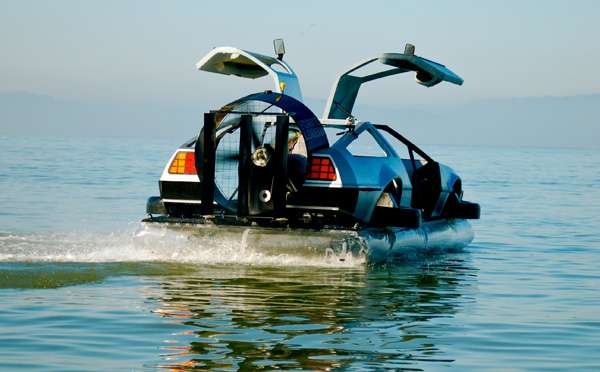I watched a man drive a hovercraft last week. The vehicle cruised over the San Francisco Bay, churning up a bed of bubbles as the crowd cheered. He sat behind the steering wheel, thousands of miles away from me and my computer screen. The man’s name is Matthew Riese, and I had been watching a video of his Delorean Hovercraft, built through the crowdfunding phenomenon Kickstarter. Though thousands of people like Riese have found success through crowdsourcing, we have not yet seen its full potential for solving issues in our communities.
The concept of crowdsourcing has skyrocketed in popularity these past few years. Along with Kickstarter—which allows online communities fund a wide range of projects—many other initiatives have sprung up with the aim of using community numbers to achieve goals. Massdrop is a company that organizes group buys to lower the price of goods; Gustin is a men’s clothing company that produces apparel based on the community’s desires; Amazon’s recent foray into television, the political comedy Alpha House, was based off a script chosen by customers; and there is even a Kickstarter-modelled website called Offbeatr which specializes in funding adult fetish projects.
Perhaps the greatest example of modern crowdsourcing has been through online educational platforms. Khan Academy, the famous learning source created by Salman Khan in 2006, has opened its doors to online community teachers and translators. More recently, Massive Open Online Courses (MOOCs) have taken the world by storm. Websites such as edX and Coursera offer free courses from world-renowned institutions, including McGill. Many of these courses allow the enrolled participants to grade their peers’ work, with a dynamic network of communication between students and professors.
However, I still believe that we are not using the concept of crowdsourcing to its full potential. In a recent TED talk, Roger Stein, a finance lecturer at MIT, drew attention by proposing a community-funded method of revolutionizing drug trials. To combat the back-up of potentially life-saving drugs due to a lack of funding, he proposed a model where community stakeholders would help fund a larger baseline pool of drugs. This would allow the drugs to gradually make their way up the approval process, creating a self-funding cycle and producing gradual returns for stakeholders.
In a similar vein, why are we not using crowdsourcing to draw attention to other issues around the world? On a social level, many people in conflict-ridden countries possess smartphones with cameras, allowing them to document international situations first-hand. Why haven’t we focused our efforts on providing a medium for these people to show the world what they see? In the world of science, there have been small pockets of effort to engage “citizen scientists,” an initiative that uses those with an interest in science to help facilitate scientific breakthroughs. If more labs and institutions around the world were willing to do this, how much quicker could we reach new scientific frontiers? Locally, crime prevention, peer teaching services, entertainment ventures, and community engagement could also stand to benefit from a greater emphasis on crowdsourcing.
It is clear to me that the crowdsourcing model has great potential beyond what has been achieved thus far. As a global reach becomes increasingly accessible with the spread of internet access, it will hopefully not be too long before we begin to see artwork, ideas, books, and achievements credited to communities instead of individuals. With the world’s population on a highway to exhausting the earth’s resources, approaching the sheer number of people from a different perspective is a refreshing take on a tough situation. In a technological age where valid complaints are made over the breakdown of real communities, perhaps crowdsourcing can be the way the world saves itself.








